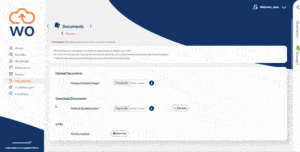As more organisations look for remote-friendly ways to handle hiring, Webonboarding General Manager , Simon Connell, has been talking to in house recruitment specialists The FIRM about virtual onboarding.
The FIRM’s Rachel Dalboth chatted to Simon about how virtual onboarding can help recruiters to manage the process online. The FIRM is a leading membership organisation for in-house recruiters, dedicated to developing, supporting and inspiring their members.
You can find the full interview here: Virtual Onboarding Ask The Expert Clinic
What do we mean by virtual onboarding?
Onboarding is a very general term but I regard it as starting as soon as a role is offered and through to them becoming a productive employee.
So virtual onboarding is about doing this entire process without relying on face-to-face interactions or physical sharing of documentation.
How do people respond to online or virtual onboarding?
When it’s done well, people respond really well. If you have a decent onboarding process already in place, something that’s well laid out and works, then moving to an online process is relatively easy and delivers similar results.
There are always going to be differences. Having face-to-face contact is very different from handling it online. But if you know your process and you know what needs to be done, then you can get just as good results from an online approach.
What are some of the key ingredients for effective virtual onboarding?
The key things remain exactly the same. It’s about good communication throughout the process so that you’re keeping in touch with candidates and letting them know what’s going on.
One important aspect is to make sure people receive as much information as possible prior to their start date. People generally want to always be ‘kept in the loop’. They don’t want to be left in the dark and we’ve all had experiences of going into new jobs where the contact hasn’t been great. There’s nothing worse.
You don’t want a new hire to start thinking, ‘Is this still happening?’, ‘Is there something going on here that I don’t know about?’. So it’s about reducing those fears and keeping people fully informed throughout – it’s a key part of the process.
How do you get across the culture of an organisation?
A lot of the research shows that this process starts from the very first interactions during the application and interview process. It’s about how you are dealing with people from that first point of contact.
But where a lot of people fail is that kind of attention is not maintained during the onboarding phase. People tend to think the work has been done – people were engaged during the interview process and get a good impression of the culture.
But if contact then drops off or if the information shared dries up; if there are limited communications and no established contact points, then all of those positive initial good impressions can quickly be lost.
It could be four weeks or three months since they had that interview experience. If you don’t focus on promoting a positive culture during this period, by day one – you could have already lost them.
What is preboarding and how do you know what to share?
There are lots of different interpretations but I regard the onboarding process as starting when a role is offered. The first part of the process is usually focused on getting the contractual paperwork done.
I regard preboarding as the period after the essential stuff is done and you can start building the relationship. This would include sharing culture related information and helping to introduce new starters to team members.
It’s about finding the balance between engaging and informing without overwhelming a person with too much information. These preboarding contacts can be optional, providing information that a person is free to dip into but it’s not mandatory.
What tips or tricks can you give people looking to improve onboarding?
My main tip would be to make sure your plan is down on paper. Document the complete process you have in place to bring in new hires. What does the pathway look like as a person moves into your organisation?
For me, this has to be the starting point. It doesn’t matter what tools or systems you have if you don’t have this kind of documented roadmap in place. If the underlying process is inadequate, no tool is going to fix it.
Once you have it down on paper, it becomes much easier to start identifying where the process may be weak; areas which can be improved. This is a particularly important task in light of recent events.
With so many people now having to work remotely, it means some major adaptations to the processes we use for hiring. A lot of companies are suddenly having to look at ways to handle this process without relying on posted paper contracts.
Then you can start to look at how you handle the forms that people need to fill in. You can look for better ways to manage and track information which are compatible with remote working.
There are a number of different project management tools out there to help handle this. One thing to be wary of, however, is overloading your process with multiple tools and systems. If you’re not careful, managing multiple systems can start to become an administrative burden.
Webonboarding is a cloud based tool that brings the entire onboarding process and experience into one system reducing the time it takes to manage the process and providing a better experience for candidates even when everyone is working remotely.




